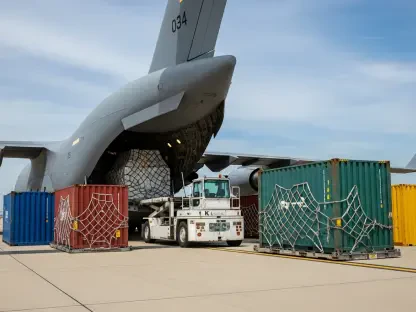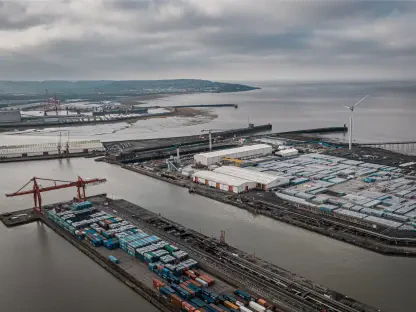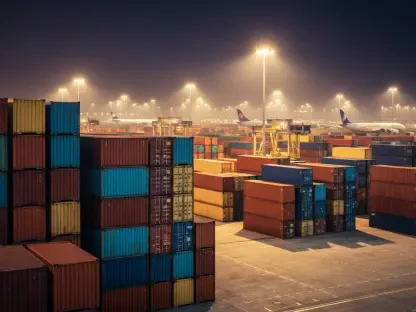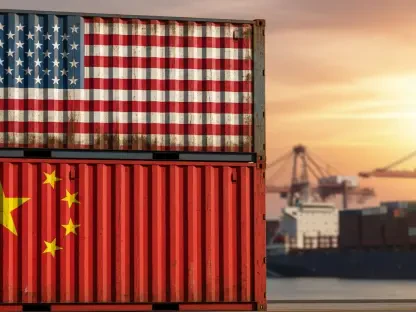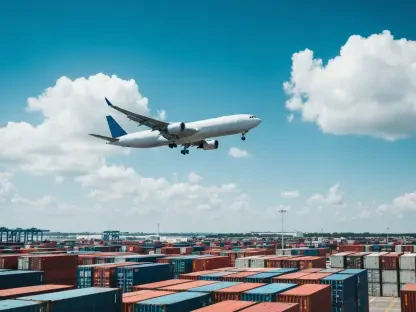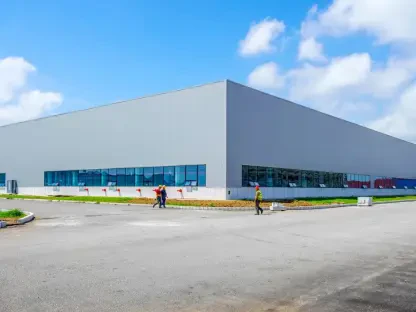The subject of analysis in this article is the array of logistics challenges that shippers are expected to encounter in the year 2025. These challenges span several logistics domains, including ocean shipping, rail, air cargo, trucking, and parcel delivery operations. The central theme revolves around how these varied sectors will be impacted by political, economic, and regulatory factors, including potential tariff implementations, labor disputes, pricing pressures, and infrastructural limitations. The synthesis offered here seeks to create a comprehensive understanding of these looming risks and potential strategies shippers might adopt to mitigate them.
Impact of Tariffs on Logistics Sectors
One of the prominent topics discussed in the article is the impact of tariffs, particularly in relation to President-elect Donald Trump’s proposed policies. These tariffs are expected to introduce significant changes across all major transport modes—ocean, air, rail, truck, and parcel delivery. Each of these sectors is likely to grapple with unique complexities stemming from these economic policies. In terms of ocean shipping, the ratification of the six-year union contract for East and Gulf Coast port workers is a focal point. Announced by the International Longshoremen’s Association and the United States Maritime Alliance, this contract aims to circumvent a potential Jan. 15 port strike. However, it still requires approval from rank-and-file workers and port employers, adding an element of uncertainty. If rejected, shippers may need to pivot by monitoring goods at risk, adjusting inventory levels, and exploring alternative ports, especially on the West Coast. Additionally, companies might resort to air freight, albeit with higher costs, as a backup plan to ensure continuity.
Ocean Shipping: Union Contracts and Tariff Implications
Another pertinent aspect for ocean shipping is the anticipated impact of Trump’s tariffs. Some shippers are already frontloading imports and building up inventory to minimize potential tariff repercussions. Companies are advised to gather pertinent data, explore alternative options, and form contingency plans that consider costs, lead times, and supplier adaptation.
Rail Logistics: Labor Disputes and Capacity Constraints
Rail logistics also face their set of challenges. Labor disputes and tariff fluctuations are central to rail shipper strategies for 2025. Jay Cushing from Gimme Credit highlights that intermittent labor instabilities and tariff ambiguities should be seen as recurring costs of business rather than anomalies. Particular attention is given to CPKC, which is highly susceptible to North American tariffs given its extensive network across the U.S., Canada, and Mexico. Yet, with the push towards nearshoring, CPKC stands to benefit from increased U.S.-Mexico freight activities. Nonetheless, the surge in cross-border trade has strained existing rail capacities, creating bottlenecks and necessitating infrastructure enhancements to keep pace with demand.
The transportation landscape between the U.S. and Mexico, particularly in the rail sector, is under pressure due to increased trade activity. Significant spikes, particularly over the last 18 months, have overwhelmed the available rail capacity. This issue has notably affected the agricultural sector, where major U.S. railroads have paused grain shipments into Mexico, disrupting trade flows.
Paul Brashier from ITS Logistics underscores the urgent need for Mexico to enhance its infrastructure to support the growing demand. Under President Claudia Sheinbaum, there’s a push to prioritize rail transportation improvements as a part of Mexico’s broader infrastructure development agenda.
Air Cargo: Regulatory Scrutiny and De Minimis Exemption
Regarding air cargo, challenges stemming from regulatory scrutiny and the de minimis exemption are significant. The de minimis provision has been a crucial component for direct-to-consumer supply chains, particularly for e-commerce, allowing companies to bypass duties and taxes on U.S. imports below $800. Madhav Kurup from Hellmann Worldwide Logistics notes that increased regulatory attention has introduced new data collection requirements, which could affect e-commerce shipment flows and consequently the air cargo sector. Additionally, changes in tariffs may temporarily boost air cargo demand as shippers rush to secure inventory ahead of new tariffs, but overall, shippers are anticipated to ramp up ocean shipments instead.
Trucking Sector: Rate Fluctuations and Strategic Planning
Shifting focus to the trucking sector, the article points out that truckload shippers are unlikely to see the favorable rates experienced over the past two years. Chris Caplice from DAT Freight and Analytics indicates that since early 2022, truckload rates have dropped significantly, but there are signals suggesting that rates may swing back in carriers’ favor. Supply chain professionals are advised to set realistic expectations and benchmark rates against the broader market trends. With rates currently low, shippers are looking to lock in these prices for longer durations. Jeremy Nolt from Zipline Logistics shares that shippers are aiming to secure current brokerage rates, anticipating that they may not see such low prices for an extended period.
Parcel Delivery Operations: Labor Disruptions and Contingency Plans
Political factors, such as potential changes in trade policies and tariff implementations, could drastically affect the cost and efficiency of shipping operations. Economic factors, including shifts in global market dynamics and fluctuating fuel prices, may influence freight costs and delivery timelines. Furthermore, regulatory issues, such as new environmental standards and labor laws, could add layers of complexity and cost to logistics operations.
The article aims to provide a thorough understanding of the risks that lie ahead, helping shippers anticipate and prepare for these challenges. By considering potential strategies, such as diversifying supply chains, investing in technology, and enhancing operational efficiency, shippers can better navigate the uncertainties of 2025. The synthesis here offers valuable insights for logistics professionals looking to mitigate impending risks and adapt to evolving industry conditions.


